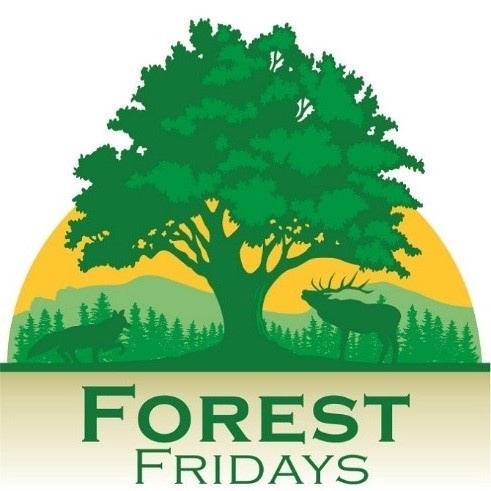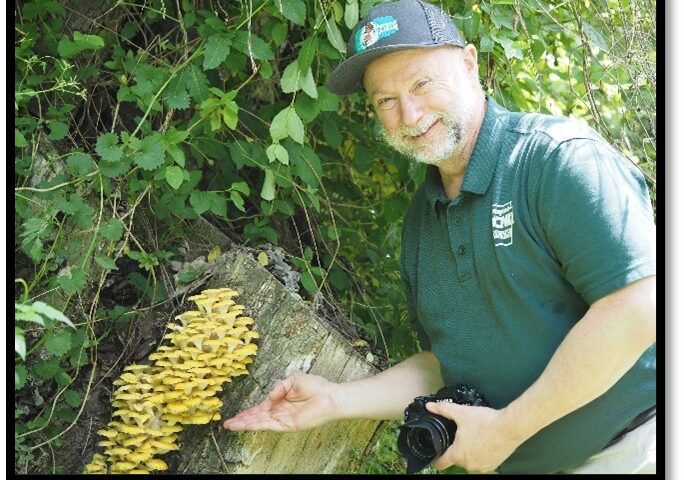Forest Fridays are published weekly by the PA Bureau of Forestry, Department of Conservation and Natural Resources (DCNR).

by John Schwartzer

Abscission layer stained red. Note the blue streak of phloem still absorbing nutrients. Photo credit: Michael Clayton, University of Wisconsin.
Everyone knows that trees change color and drop leaves in autumn, but what else happens in trees when these seasons change? Most wood growth has stopped by mid-summer; flower and leaf buds have been set, and roots store sugar reserves for next year. As days get shorter, they prepare for the cold through a process called acclimatization. Broad-leaved trees have large leaf areas that would lose water and hold heavy snow and ice, so they drop their leaves.
Shorter days cue the production of the hormone abscisic acid, or AA. AA is responsible for creating the abscission layer, the place where the leaf connection is severed. As the abscission layer forms, the lamella, or glue, that holds the cells together, is dissolved. Xylem cells shut down and starve the leaf of water, while phloem cells drain food resources back into the tree until the leaf falls. The abscission layer releases the leaf cleanly from the branch with gravity or wind. The open leaf scar on the branch is quickly callused over with a protective covering to prevent water loss and infections.
Plumbers know that water freezing in the pipes is bad news; trees “know” this too. A tree is a complicated bundle of pipes. If water were to freeze in the plumbing, jagged ice crystals could wreck the tubes. Trees produce proteins to act as ice “seeds”, causing ice to form between the cells instead of within. The AA that aids in leaf drop also makes the tree cells more permeable, allowing water to move out of cell walls. The fluids become more concentrated with substances that lower the freezing point. A willow holds the record for cold endurance, surviving a dip in liquid nitrogen– a chilly -320°F.
Although it doesn’t appear so, there is plenty going on inside the tree in the fall as it prepares for winter.
Sources:
- Abscission: How does it occur? Exploring Leaf Longevity Martha Carlson, PhD candidate NRESS, UNH, 2012.
- Department of Botany (wisc.edu)
- How Do Trees Survive in Winter? | Let’s Talk Science (letstalkscience.ca)
- Tree Physiology (mtu.edu)
- Winter Adaptations of Trees (mtu.edu)
- Green with phenology | Science
- xylem | Definition, Location, Function, & Facts | Britannica
- Sakai, A. “Freezing Resistance in Willows from Different Climates.” Ecology, vol. 51, no. 3, 1970, pp. 485–91. JSTOR, https://doi.org/10.2307/1935383. Accessed 25 Oct. 2022.
- Cell Types & Tissue System: Complex Tissue : Plantlet




